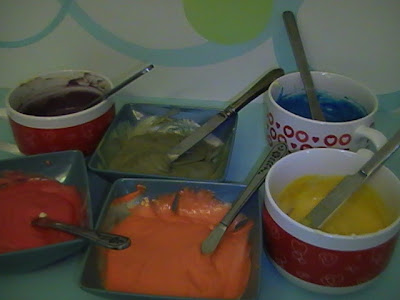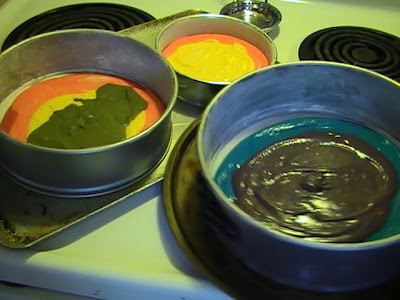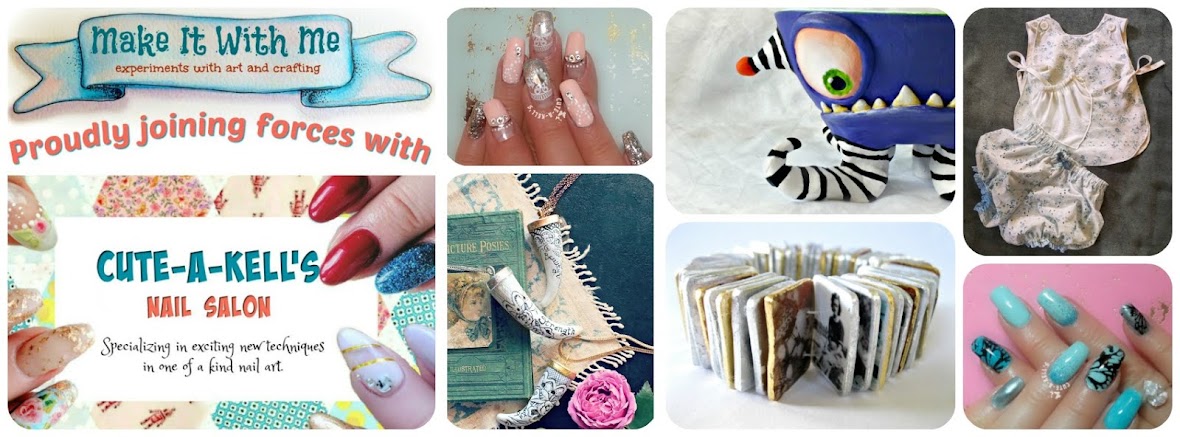
Found another documented "Making of Something".
It really is (in my humble opinion)
the worlds best birthday cake.
So much fun to make and even more fun to cut into. We got the inspiration for this project from a fabulous blog called
www.omnomicon.com
The recipe for the cake is there.
(plus many more delicious treats!)
Here I will let you see how easy it was to create.
My oldest daughter made this cake for my youngest and we all watched in amazement. It is now a family tradition and everyone asks for a rainbow cake.
Some things:
Betty Crocker white cake mix (one box for two layers)
Loads of food colouring,
(we used paste for this one but liquid works too, just use more)
cake pans, mixing bowls, wooden spoons, spatulas, mixers,
(makes LOADS of dirty dishes)
Doweling of some kind to hold the cake up
cardboard rounds to go underneath each layer
Fondant icing
Butter cream icing
rolling pin
icing sugar
oven
oven mits
It really is (in my humble opinion)
the worlds best birthday cake.
So much fun to make and even more fun to cut into. We got the inspiration for this project from a fabulous blog called
www.omnomicon.com
The recipe for the cake is there.
(plus many more delicious treats!)
Here I will let you see how easy it was to create.
My oldest daughter made this cake for my youngest and we all watched in amazement. It is now a family tradition and everyone asks for a rainbow cake.
Some things:
Betty Crocker white cake mix (one box for two layers)
Loads of food colouring,
(we used paste for this one but liquid works too, just use more)
cake pans, mixing bowls, wooden spoons, spatulas, mixers,
(makes LOADS of dirty dishes)
Doweling of some kind to hold the cake up
cardboard rounds to go underneath each layer
Fondant icing
Butter cream icing
rolling pin
icing sugar
oven
oven mits

Mix up your cake batter following the package directions. separate it into four or five little bowls. (The more bowls the more colours you'll have in the finished cake.) Add food colouring to each bowl until you are happy with the colour vibrancy. We tried to make rainbow colours.
Red
Yellow
Pink
Green
Purple
Orange
Blue
Accuracy doesn't seem to matter here as much as colour saturation. Make it bright.

Plop a spoonfull or two of batter into the bottom of your prepared (floured and buttered) baking pans. Add another colour onto that one, putting it in the middle of the previous colour. Keep layering like this until each pan is 3/4 full.
Don't spread 'em out. It'll wreck it!

Bake the cakes following the instructions on the box and let them cool. Cut a bit off the top of each layer to make them flat.
(Eat the trimmings!)
 This is my Mom watching my oldest daughter be AMAZING!
This is my Mom watching my oldest daughter be AMAZING!Each layer was covered in butter cream icing and placed on a cardboard round the same size as the cake. Then Fondant was rolled out using icing sugar to keep it from sticking to the table. Roll the fondant out to about 1/4 inch thick and cover the cakes. Use the rolling pin to lift the rolled fondant sheets onto the cake. Smooth the fondant icing out with a fondant smoother or the back of a spatula. Before you pile the cakes ontop of each other insert three dowels evenly into each layer. (the top layer doesn't need any dowels.) The dowel should be as tall as each layer. Dowels and cardboard rounds keep the cake from sagging.

We used coloured fondant to decorate our cake. we rolled it out and cut shapes from it. We also sculpted it like clay.

We ran out of icing sugar and started using corn starch to stop the icing from sticking to us and the table while we were working with it.















